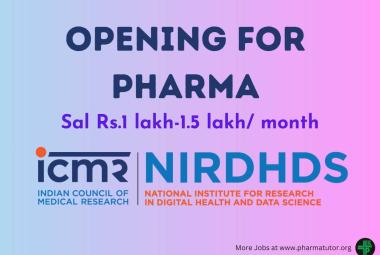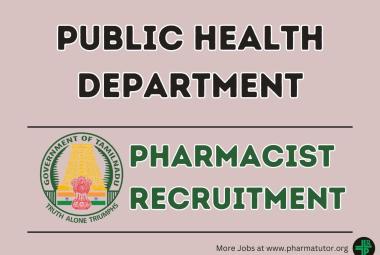




February 2018 ARTICLE LIST >>
PharmaTutor (February - 2018)
ISSN: 2347 - 7881
(Volume 6, Issue 2)
Received On: 02/11/2017; Accepted On: 06/12/2017; Published On: 01/02/2018
AUTHORS:
Devender Sharma*1, Aashiya Aara E. Ali 2, Leena R. Trivedi2
1Hi – Tech College of pharmacy,
Chandrapur Maharashtra, India
2Kamla Nehru College of pharmacy,
Nagpur, Maharashtra, India
*sdevender350@gmail.com
ABSTRACT:
Liposomes are most placed acquiring in pharma industries and very useful in the various drug delivery system used to target the drug to particular tissue. Because of structural similarity between lipid bilayer (two layer) and cell membrane, liposome can easily penetrate effectively deliver drug to such that a free drug would not easily penetrate. Liposomes can be also encapsulate in both hydrophilic and hydrophobic materials, and are utilized as drug carriers in drug delivery. This technology is very useful for the treatment of certain diseases. Now a day’s most of the researcher attraction and interest will increase for that technology i.e. Liposomes. Main object of this review this technology i.e. Liposomes very useful in certain disease and easily prepare and also give various advantages other than. Liposomes are highly biocompatible, with applications ranging from delivering enzymes, antibacterial, antiviral drugs, antiparasite drugs, transdermal transporters, fungicides, diagnostic tools and adjuvant for vaccines. This paper mainly focus on exclusively scalable techniques and also focus on strength, respectively, limitations in respect to industrial applicability and regulatory requirements concerning liposomal drug formulations based on FDA and EMEA documents.
How to cite this article: Sharma D, Ali AAE, Trivedi LR; An Updated Review on: Liposomes as drug delivery system; PharmaTutor; 2018; 6(2); 50-62; http://dx.doi.org/10.29161/PT.v6.i2.2018.50
[ABSTRACT WITH CITATION] [VIEW AS HTML]

REFERENCES:
1. Amidon, G.L., Lennernas, H., Shah, V.P., Crison, J.R. A theoretical basis for a biopharmaceutic drug classification: the correlation of in vitro drug product dissolution and in vivo bioavailability. Pharm Res. 1995; 12: 413-420.
2. Sunil, P., Maru, O., Chan, M. Novel lipid-based formulations enhancing the in vitro dissolution and permeability characteristics of a poorly water-soluble model drug, piroxicam. Int J Pharm. 2005; 301(1-2): 209-216.
3. Sharma, A., Sharma, U.S. Liposomes in drug delivery: progress and limitations. Int J Pharm. 1997; 154: 123-140.
4. Gregoriadis, G. Liposomes, In Gregoriadis, G., (Ed.), Drug Carriers in Biology and Medicine. Academic Press, New York. 1979; Ch. 14. Page 287- 341.
5. Albertsson, A.C., Donaruma, L.G., Vogl, O. Synthetic polymers as drugs, In Tirrell, D.A., Donaruma, L.G., Turek, A.B., (Eds.), Macromolecules as drugs and drug as carriers for biologically active material. Ann NY Acad Sci. 1985; 446: 105-115.
6. Donaruma, L.G., Warner, R.J. Some biologically active (thiosemicarbazides). In Tirrell, D.A., Donaruma, L.G. and Turek, A.B. (Eds.), Macromolecules as drugs and drug as carriers for biologically active materials. Ann NY Acad Sci. 1985; 446: 116-133.
7. Abra, R.M., Hunt, C.A. Liposome disposition in vivo. III. Dose and vesicle size effects, Biochim Biophys Acta. 1981; 666: 493-503.
8. Tirrell, D.A., Heath, T.D., Colley, C.M., Ryman, B.E. New aspects of liposomes, Biochim Biophys Acta. 1976; 457: 259.
9. Sahoo SK, Labhasetwar V: Nanotech approaches to drug delivery and imaging. DDT 2003, 8:24.
10. Gabizon A, Goren D, Cohen R, Barenholz Y: Development of liposomal anthracyclines: from basics to clinical applications. J Control Release 1998, 53:275–279.
11. Allen TM: Liposomes. Opportunities in drug delivery. Drugs 1997, 54(Suppl 4):8–14.
12. Chrai SS, Murari R, Imran A: Liposomes: a review. Bio Pharm 2001,14(11):10–14.
13. Andreas W, Karola VU: Liposome technology for industrial purposes. J Drug Delivery 2011, 2011:9.
14. Atrooz OM: Effects of alkylresorcinolic lipids obtained from acetonic extract of Jordanian wheat grains on liposome properties. Int J Biol Chem 2011, 5(5):314–321.
15. Benech RO, Kheadr EE, Laridi R, Lacroix C, Fliss I: Inhibition of Listeria innocua in cheddar cheese by addition of nisin Z in liposomes or by in situ production in mixed culture. Applied Environ Microbiol 2002, 68:3683–3690.
16. Shehata T, Ogawara K, Higaki K, Kimura T: Prolongation of residence time of liposome by surface-modification with mixture of hydrophilic polymers. Int J Pharm 2008, 359:272–279.
17. Johnston MJ, Semple SC, Klimuk SK, Ansell S, Maurer N, Cullis PR: Characterization of the drug retention and pharmacokinetic properties of liposomal nanoparticles containing dihydrosphingomyelin. Biochim Biophys Acta 2007, 1768:1121–1127.















